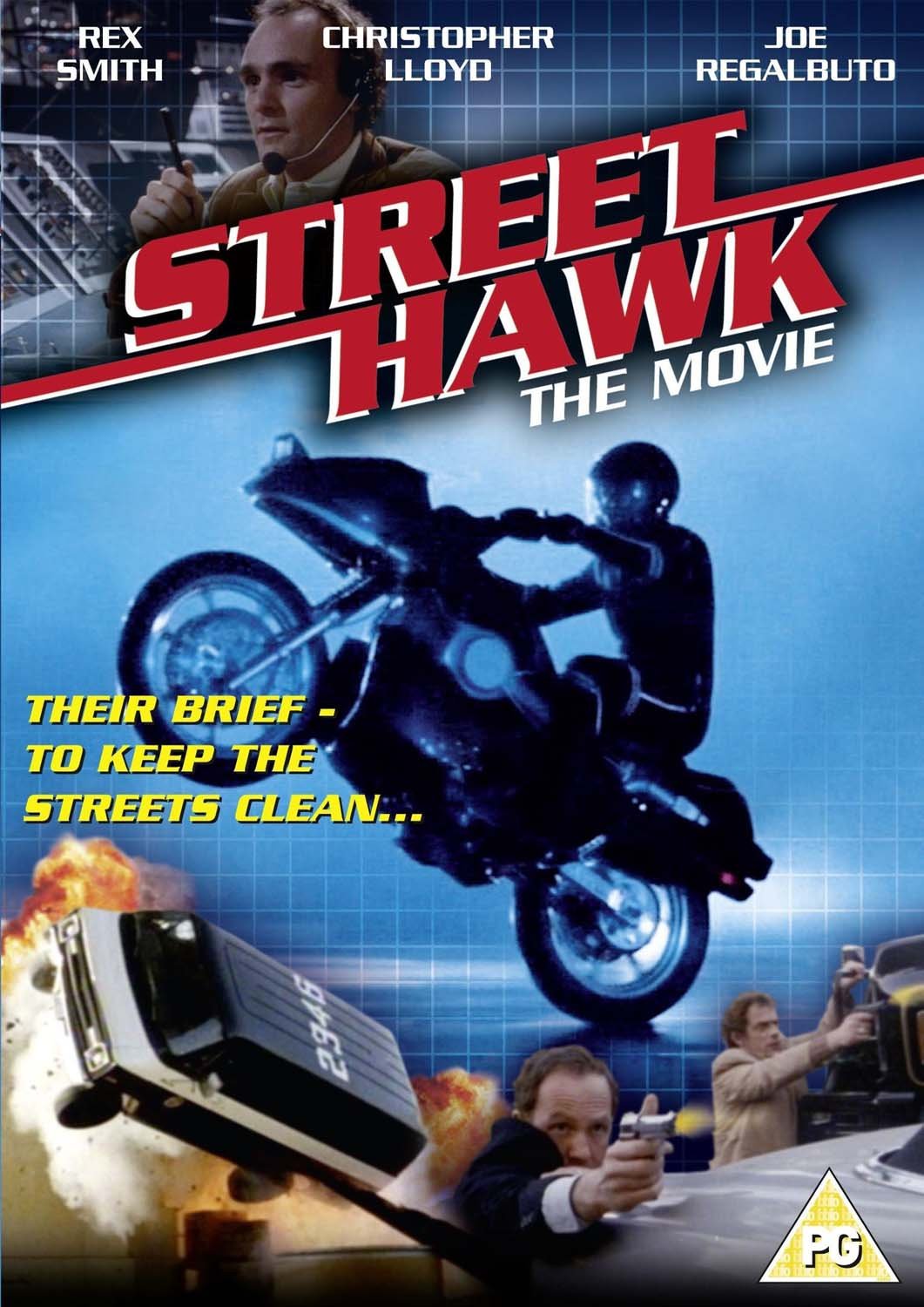Introduction
In the mid-1980s, television enthusiasts were treated to an electrifying blend of crime-fighting and cutting-edge technology with the advent of “Street Hawk.” Premiering in 1985, this short-lived yet memorable series introduced viewers to the high-octane world of Jessie Mach and his advanced, crime-fighting motorcycle. As we embark on a comprehensive exploration of “Street Hawk,” we’ll dive into its origins, characters, technological marvels, impact, and the enduring nostalgia that surrounds this cult classic.
The Birth of “Street Hawk”
Concept and Development
“Street Hawk” was conceived during a time when the fascination with high-tech vehicles and crime-fighting vigilantes was at its peak. Created by Paul M. Belous and Robert Wolterstorff, the series sought to capitalize on the popularity of shows like “Knight Rider” while adding a unique twist – a super-powered motorcycle designed for urban crime prevention.
The High-Tech Motorcycle
At the heart of “Street Hawk” lay the titular vehicle, a highly advanced, all-terrain motorcycle equipped with an array of cutting-edge gadgets. Developed by the fictitious organization “The Foundation,” Street Hawk became the central element of the series, showcasing a level of technological innovation that captivated audiences.
The World of “Street Hawk”
Premise and Format
“Street Hawk” followed Jessie Mach, played by Rex Smith, a former motorbike cop enlisted by The Foundation to become the vigilante crime-fighter behind the mask of Street Hawk. The series embraced the episodic format, presenting viewers with thrilling adventures as Mach patrolled the streets, using the motorcycle’s extraordinary capabilities to combat criminals.
Technological Marvels
What set “Street Hawk” apart was the incorporation of cutting-edge technology into its narrative. The motorcycle boasted impressive features such as hyperthrust capabilities, holographic display, and an array of weapons. The series provided a glimpse into a futuristic world where crime-fighting embraced the forefront of technological advancement.
Impact and Reception
Techno-Thrill for Audiences
“Street Hawk” garnered attention for its unique premise, combining elements of crime-fighting, technology, and fast-paced action. Audiences were drawn to the thrilling adventures of Jessie Mach as he utilized Street Hawk to take down criminals and navigate through urban landscapes with unparalleled speed.
Visual Effects and Stunts
The series was praised for its visual effects and stunt work, with the motorcycle sequences capturing the imagination of viewers. The combination of practical stunts and visual effects added to the show’s overall appeal, making it a visual spectacle that resonated with fans.
Cult Following
While “Street Hawk” faced challenges and was limited to a single season, it developed a dedicated cult following. Fans appreciated the show’s unique blend of technology and action, and Street Hawk became an enduring symbol of vehicular prowess in the realm of crime-fighting.
Characters and Cast
Rex Smith as Jessie Mach
Rex Smith’s portrayal of Jessie Mach added a charismatic and relatable dimension to the character. As the man behind the helmet, Smith brought a sense of humanity to Mach, balancing the tough exterior of a crime-fighter with the vulnerabilities of a man thrust into a world of high-tech vigilantism.
Norman Tuttle (Joe Regalbuto)
Joe Regalbuto played Norman Tuttle, the quirky and resourceful engineer behind the creation of Street Hawk. Tuttle’s eccentricities and technical prowess provided comic relief and served as a crucial element in the show’s dynamic.
Behind the Scenes
Production Challenges
“Street Hawk” faced its fair share of challenges during production. The high cost of special effects and the technical demands of creating a convincing futuristic motorcycle for each episode contributed to the show’s financial strain. Despite these challenges, the production team succeeded in delivering a visually impressive series.
Legacy of Technological Imagination
While “Street Hawk” may not have enjoyed the same longevity as some of its contemporaries, it left an enduring legacy in the realm of technological imagination. The series paved the way for other shows and films that explored the integration of advanced technology into crime-fighting narratives.
Fan Appreciation and Nostalgia
Devoted Fandom
Decades after its initial run, “Street Hawk” maintains a devoted fandom. Fans appreciate the show’s unique concept, memorable characters, and the thrill of witnessing a technologically enhanced motorcycle in action. Online communities and fan forums continue to celebrate the enduring appeal of “Street Hawk.”
Nostalgia for a Bygone Era
For those who grew up watching “Street Hawk” during its original broadcast, the series represents a nostalgic journey to a bygone era of television. The show’s 1980s aesthetic, combined with its futuristic vision, creates a nostalgic blend that resonates with viewers who fondly remember the techno-thrills of their youth.
Conclusion
“Street Hawk” (1985) may have been a fleeting presence on the television landscape, but its impact reverberates through the corridors of pop culture nostalgia. From the whirring sounds of Street Hawk’s hyperthrust to the urban landscapes where Jessie Mach patrolled, the series remains etched in the memories of those who experienced its high-tech adventures.
As we revisit the neon-lit streets and cutting-edge gadgetry of “Street Hawk,” it becomes clear that the show’s brief tenure didn’t diminish its significance. Instead, “Street Hawk” stands tall as a symbol of technological imagination and vehicular prowess, offering a timeless reminder of the era when television dared to envision a future where crime-fighting took to the streets on the back of a sleek, high-tech motorcycle. The legacy of “Street Hawk” lives on in the hearts of fans who still feel the thrill of the ride, reminding us that sometimes, all it takes is a man and his machine to make a lasting impression on the tapestry of television history.
